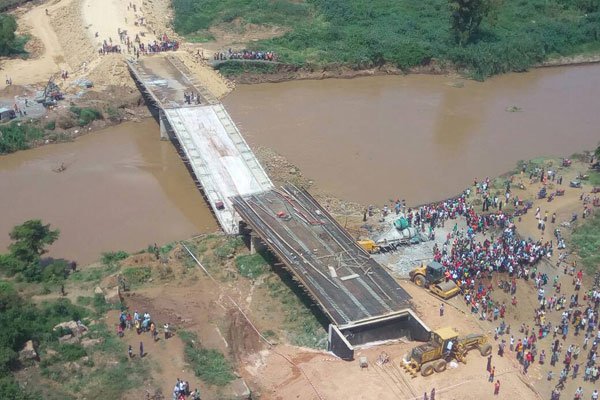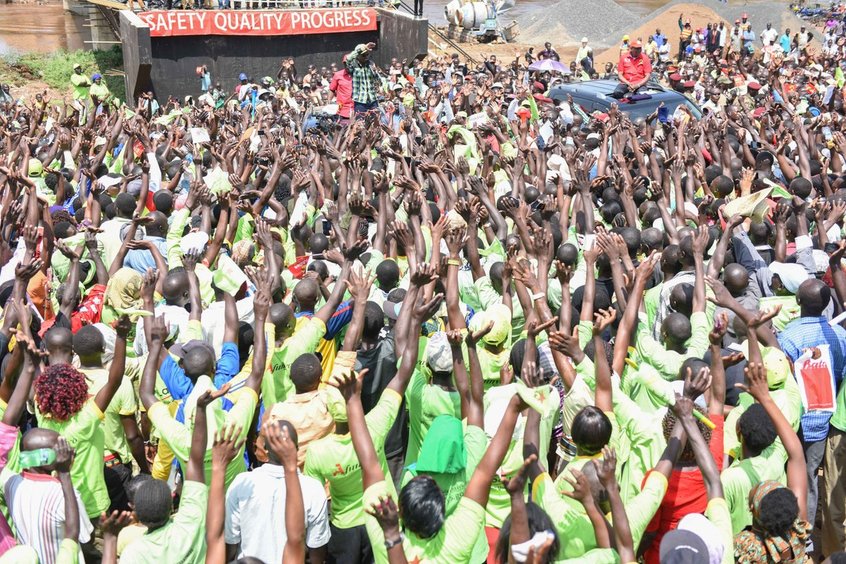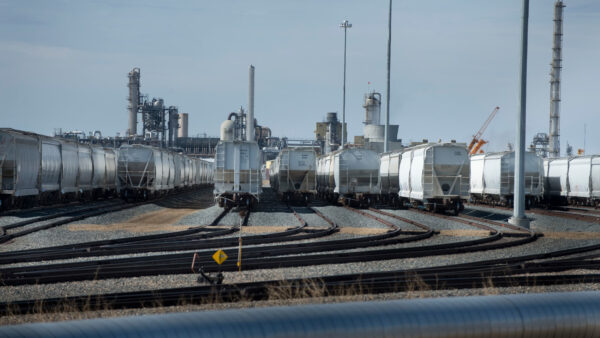Under construction by a Chinese company, a bridge in Kenya has mysteriously collapsed less than a fortnight after President Uhuru Kenyatta (pictured) came to inspect it.
Campaigning hard for re-election, the president visited Busia County on 14 June, saying the $11.5m Sigiri Bridge, expected to be complete next month, would transform people’s lives by making it easier to cross the treacherous River Nzoia.
But 12 days later on 26 June one end of the 50-m-long central span broke off from the landward span and crashed to the ground, injuring a number of workers, reports Kenya’s Daily Nation.

Sigiri Bridge in Budalang’i Constituency collapsed on 26 June 2017 (Gaitano Pessa/Nation Media Group)
The contractor is reported to be China Overseas Construction and Engineering Company (COVEC). Work began in 2015.
COVEC said it had done nothing wrong.
“We adhered to all the set standards before and during the construction of the bridge,” COVEC’s project manager told the newspaper, adding: “We have experienced engineers and we are equally baffled by what happened.”
The project manager also insisted 20 people were injured, not 27 as reported.

President Uhuru Kenyatta is briefed by COVEC officials on the new bridge on 14 June 2017 (From Uhuru Kenyatta’s Twitter feed)
The government has now suspended construction of the bridge pending a probe into the cause of the collapse, and police are investigating the possibility of foul play.
Infrastructure Principal Secretary John Mosonik said that the Kenya Rural Roads Authority had “dispatched a team of top Engineers to site to investigate the cause of the failure”.

Crowds cheer the President, and the bridge, which will make crossing the River Nzoia safe (From Uhuru Kenyatta’s Twitter feed)
The bridge in Budalang’i Constituency will link the communities of Bunyala North and Bunyala South, which are just 3km apart across the river, while to drive between the two requires a 100-km road journey.
Crossing the river is dangerous. In 2014, 11 people trying to cross died when their boat capsized.
After the collapse the area’s MP, Ababu Namwamba, said: “The dream for the Sigiri Bridge still lives on. Nothing will dampen this spirit.”

The surface of the bridge on the day of the president’s visit (From Uhuru Kenyatta’s Twitter feed)
As the collapse became politicised in the run-up to the 8 August election, Namwamba said authorities could not rule out “economic sabotage”, and he referred to vandalism targeted at Kenya’s new, Chinese-built standard gauge railway.
Top Image: Kenya’s President Uhuru Kenyatta mounts the new bridge to inspect it on 14 June 2017 (From Uhuru Kenyatta’s Twitter feed)
Comments
Comments are closed.











Fast flowing rivers such as ,it seems, this one is, can very quickly scour out the riverbank side of supporting the sub-gravel below the column-base to the supporting columns and beam structure which in turn previously supported one end of the mid-span of this bridge! This then would ,in effect, cause an uneven subsidence toward the riverbank side of the submerged column-base : thus causing the columns and beam structure to likewise subside out of vertical toward the riverbank and thus robing the whole central span of the bridge of its riverbank side crossbeam support and thus causing it to fall down into the river below! This begs the question : has the columns-base been fully supported and ad-fixed to sufficient deep driven river bridge piling or not?
projectdesign needs to be first
I would like to see the design, construction and testing quality control
Lack of both Design Quality Control and Construction Quality Control Management.